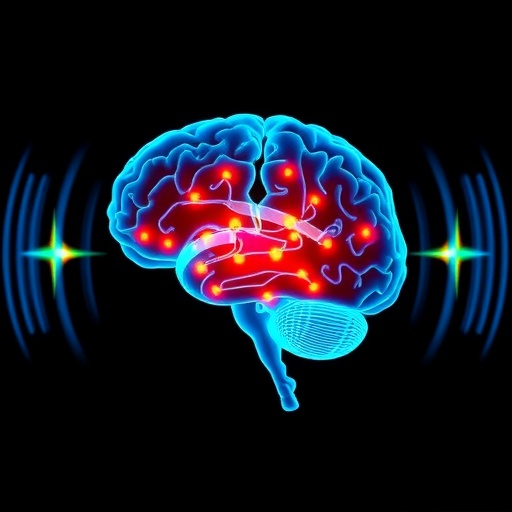Recent advancements in medical technology have unveiled a transformative method of interacting with the human brain: low-intensity focused ultrasound (LIFU). This pioneering technique is carving out a niche in the medical field for its ability to modulate neuronal activity with remarkable precision, all while maintaining a non-invasive approach. As a result, it stands poised to revolutionize the treatment of various brain disorders, providing new hope for patients suffering from conditions previously deemed difficult or impossible to treat.
The evolution of ultrasound brain stimulation technologies has accelerated in tandem with advancements in our understanding of neurological disorders and their treatment. Integrated biological monitoring systems have propelled exploratory studies which are driving LIFU closer to clinical application. This harmonious fusion of technology and biology is breaking down barriers and setting the stage for a new era in therapeutic interventions, as researchers delve deeper into the nuances of ultrasound stimulation and its endless possibilities.
At the heart of these innovations are ultrasound transducers, specifically the micromachined and piezoelectric types. These transducers serve as the critical devices that generate and direct the ultrasound waves necessary for effective stimulation of neural tissues. The development of these devices has progressed significantly, offering finer control over the stimulation process and paving the way for higher resolution targeting of specific brain regions, essential for attaining the desired therapeutic outcomes.
The intricate design of ultrasound transducers allows for improved spatial resolution, enabling researchers to target specific neuronal populations rather than affecting a broader area. This precision is essential, as it minimizes the risk of collateral effects and enhances the therapeutic potential of ultrasound stimulation. Beam steering capabilities further augment this precision, allowing for the dynamic adjustment of ultrasound beams to reach different angles and depths within the brain, which is particularly crucial for effective treatment delivery.
Research on ultrasound brain stimulation isn’t merely a technical endeavor; it is also intricately linked with understanding the biological phenomena it seeks to influence. Integration with physiological readouts, such as electroencephalography (EEG) and functional magnetic resonance imaging (fMRI), allows for real-time monitoring of neuronal activity as it responds to ultrasound stimulation. Such capabilities enable a comprehensive understanding of how targeted therapies can modulate brain function and behavior, transforming abstract insights into practical clinical applications.
Another vital aspect of advancing ultrasound stimulation technologies is the focus on skull compensation. The human skull can distort sound waves, compromising the stimulation’s efficacy. Innovative solutions to counteract these distortions have emerged, such as advanced computational algorithms that anticipate and compensate for these effects, enhancing the precision and effectiveness of ultrasound treatments. By overcoming the structural limitations posed by the skull, researchers can significantly improve the delivery of ultrasound beams to targeted brain areas.
Closed-loop algorithms represent another promising development in the realm of ultrasound brain stimulation. These dynamic systems can adaptively adjust the stimulation parameters in real-time based on feedback from biological monitoring systems. Such adaptability not only enhances treatment efficacy but also minimizes potential side effects, as the system can respond promptingly to the brain’s immediate reactions to stimulation. This feedback loop approach is a game-changer, moving from a purely exploratory paradigm to one grounded in responsive therapeutic applications.
Despite the progress made, numerous technical challenges remain. Researchers are continually working on optimizing transducer designs to maximize efficiency and minimize energy consumption. The quest for advanced materials that can withstand the demands of focused ultrasound is ongoing, requiring a partnership between engineers and clinicians to create tools that are both functional and clinically viable. Moreover, ensuring the safety of patients during procedures involving LIFU is paramount, demanding rigorous testing and validation before widespread clinical adoption.
Looking ahead, the potential applications of ultrasound brain stimulation are vast. Beyond treatment for neural disorders such as epilepsy and depression, researchers are investigating its possibilities in cognitive enhancement, recovery from brain injuries, and even neuroplasticity facilitation. As this technology matures, its implications could extend well beyond the confines of medical treatment, opening avenues for augmenting cognitive function and mental health that were previously unimaginable.
Implementing ultrasound brain stimulation into clinical practice requires a systematic approach to ensure the technology is not only effective but also accessible. Collaboration among various disciplines—engineering, neuroscience, clinical medicine, and regulatory affairs—will be vital for overcoming existing barriers. Educating healthcare professionals about these new technologies will also play a significant role in promoting acceptance and utilization in clinical settings.
As enthusiasm builds around ultrasound brain stimulation technologies, there is a palpable excitement about their potential. Researchers are optimistic that as further refinements are made, the technology will not only gain traction in preclinical studies but will also transition successfully into clinical investigations. This trajectory hints at a future where brain disorders can be treated with unprecedented levels of precision, providing tailored solutions to patients with unique neurological profiles.
In conclusion, low-intensity focused ultrasound represents a breakthrough in the arsenal of therapeutic tools available for managing brain disorders. Its growing body of research and rapid technological advancements underscore a promising future for both patients and clinicians. As the scientific community pushes forward in this exploration, the collaborations formed and innovations developed will undoubtedly pave the way for a paradigm shift in the treatment of neurological conditions, heralding a new chapter in medical history.
Subject of Research: Low-intensity focused ultrasound for targeting brain disorders.
Article Title: Ultrasound brain stimulation technologies for targeted therapeutics.
Article References:
Jo, Y., Kim, S., Jeong, J. et al. Ultrasound brain stimulation technologies for targeted therapeutics.
Nat Electron 8, 647–662 (2025). https://doi.org/10.1038/s41928-025-01420-3
Image Credits: AI Generated
DOI: https://doi.org/10.1038/s41928-025-01420-3
Keywords: Low-intensity focused ultrasound, brain stimulation, neuronal modulation, clinical treatment, ultrasound transducers.
Tags: advancements in medical ultrasound devicesbreakthroughs in brain disorder treatmentsclinical applications of ultrasound therapyinnovative approaches to neurological disordersintegrated biological monitoring systemslow-intensity focused ultrasoundmicromachined ultrasound technologyneuronal activity modulationnon-invasive brain therapiespiezoelectric ultrasound transducerstargeted therapeutics in neurologyultrasound brain stimulation technology





